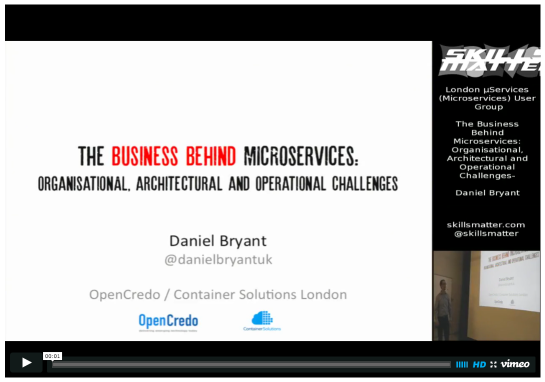On Wednesday I had the pleasure of presenting a new talk at the London Microservices User Group, which was entitled “The Business Behind Microservices: Organisational, Architectural and Operational Challenges”.
The key theme of the talk was exploring the often under-appreciated organisational and people impact that introducing (or moving to) a microservice architecture will have on a business. As mentioned in the talk, I’ve lead the implementation of microservices architectures in several organisation as part of my work with OpenCredo and Container Solutions, and so I was keen to share my lessons from the trenches.
You can find a recording of the talk over on the Skillsmatter website, who were our generous hosts for the evening https://skillsmatter.com/skillscasts/6450-the-business-behind-microservices-organisational-architectural-and-operational-challenges
You can also find the slides on slideshare:
The original talk abstract was as follows:
The technology changes required when implementing a microservice-based application are only one part of the equation. The business and organisation will also most likely have to fundamentally change. In an ideal world, this shouldn’t be a problem – what with the rise of agile, lean and DevOps – but this is not always the situation I encounter in my consulting travels. I would like to share some stories of successful (and not so successful) strategies and tactics I have used over the past four years when introducing service-oriented architecture into organisations.
Join me for a whistle-stop tour of the business and people challenges that I have experienced first hand when implementing a greenfield microservice project, and also breaking down a monolith. We’ll look at ‘divided companies’ vs ‘connected companies’, determine the actual impact of conway’s law, briefly touch on the lean startup/enterprise mindset, dive into change management without the management double-speak, and look at the lightweight processes needed to ensure the technical success of a microservices implementation.
As usual, please do let me know if you have any questions!

